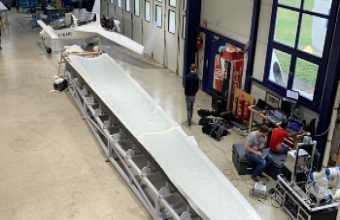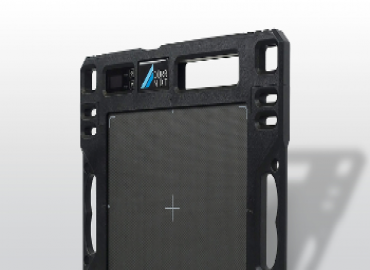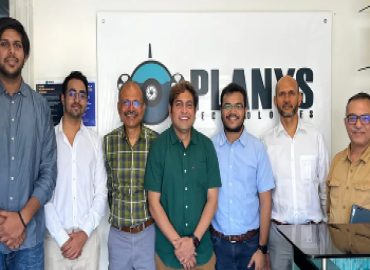Revolutionary Radar Method Enables Automatic Monitoring of Fiber Composite Manufacturing Process
A groundbreaking radar technique has emerged, poised to transform the production process of fiber composite materials, including wind turbine rotor blades. This innovative method, developed through collaboration between the Fraunhofer Institute for High-Frequency Physics and Radar Techniques FHR in Wachtberg, Germany, and consortium partners Ruhr University Bochum, FH Aachen University of Applied Sciences, and Aeroconcept GmbH, opens the door to non-destructive and automated monitoring, surpassing traditional visual inspections.
During the manufacturing of glass fiber-reinforced structural components, such as rotor blades, the precise alignment, and flow of fiber reinforcement within the resin matrix are crucial for maintaining optimal structural properties. Flaws in alignment or flow can significantly compromise the quality of the final composite material. Until now, flaws could only be detected through post-production methods like ultrasound examination, leading to costly rework or even component scrapping.
The FiberRadar project's researchers have successfully developed a groundbreaking solution that enables non-destructive and automated assessment of lower glass fiber layers' alignment. This new process utilizes a millimeter-wave scanning system, comprising a radar, a fully polarimetric robot, and advanced imaging software. By leveraging the polarization of electromagnetic waves, the system can detect potential defects through variations in polarization direction. The robot scans the component while the radar conducts measurements at each position. These measurements are then combined by the software to create a detailed 3D image. Unlike conventional radars with single-channel polarization, the new radar system employs two polarizations, enabling high-resolution imaging of the fiber structure and effective detection of defects in deeper layers. Moreover, the incorporation of refraction compensation enhances image quality by mitigating unwanted effects caused by refraction, particularly in deeper layers. By scanning individual layers using radar, researchers can non-destructively analyze fiber orientation anomalies and examine the entire material volume.
The collaborative effort behind the FiberRadar project combined the integrated radar technology expertise of Ruhr University, the algorithm expertise of Fraunhofer FHR, and FH Aachen's robotics proficiency to create a measurement system that achieves unprecedented precision in the production and quality control of fiber composite materials. Aeroconcept GmbH's invaluable experience ensures seamless integration of this technology into the wind turbine blade manufacturing and monitoring processes, establishing it as a key technology for high-quality composites.
"We are delighted with the promising results that mark the culmination of the FiberRadar project," shared André, Project Manager at Fraunhofer FHR. "Through subsequent projects, we aim to further refine the system for production implementation, enhancing both speed and depth resolution to detect potential defects more efficiently," he explained. The project received funding from the European Regional Development Fund (ERDF), showcasing the commitment to innovation and technological advancement in the region.












